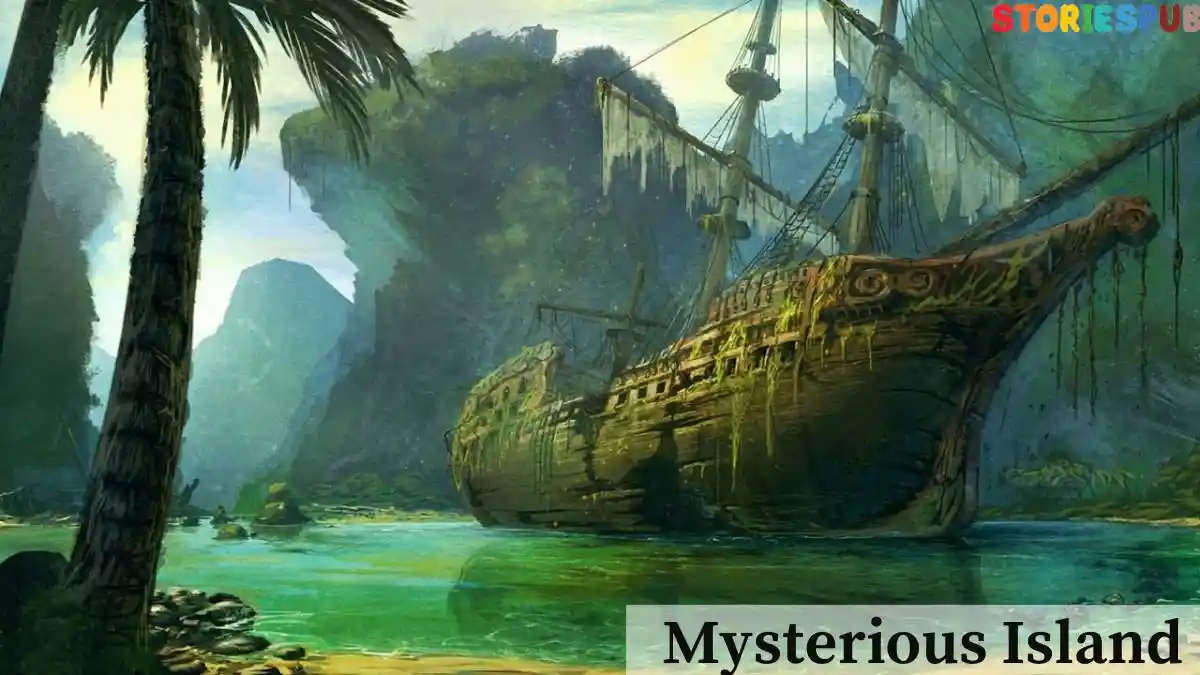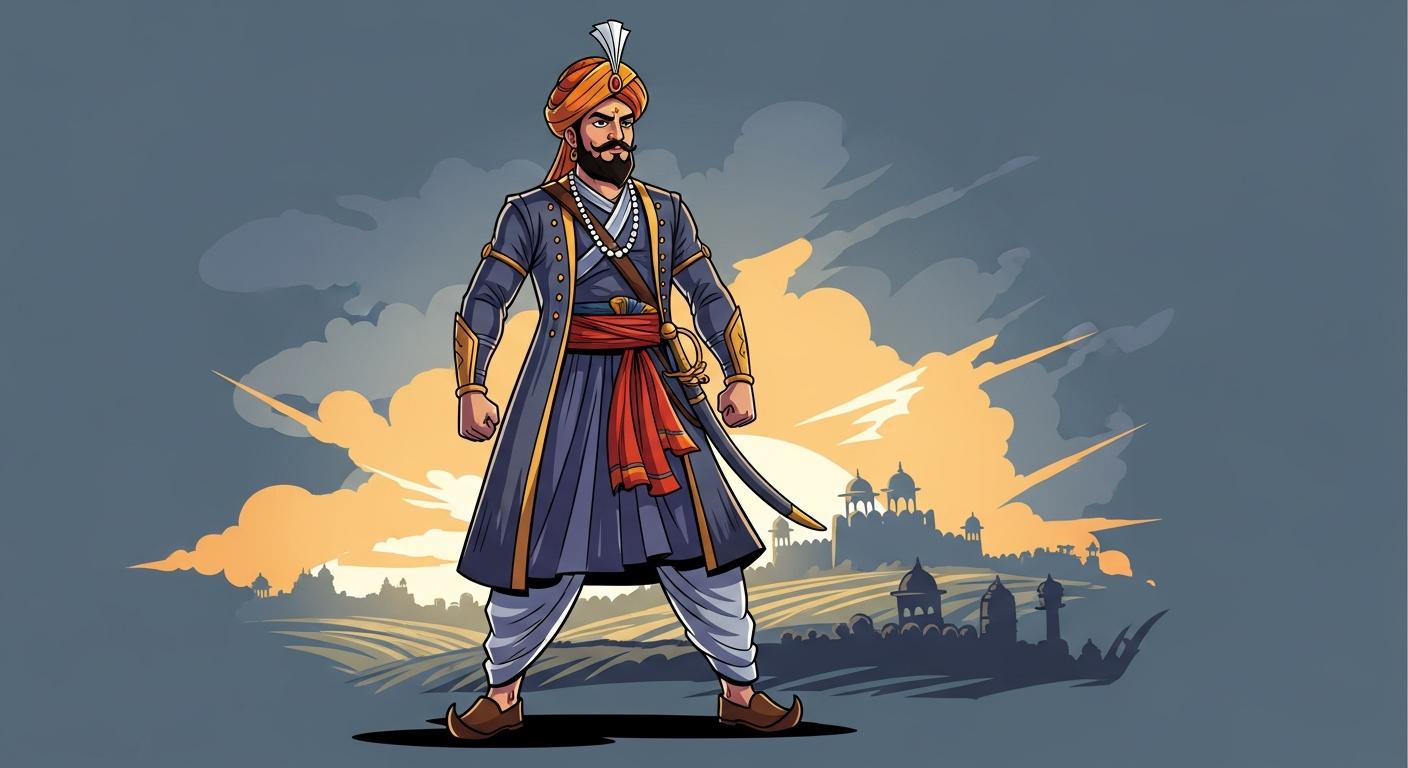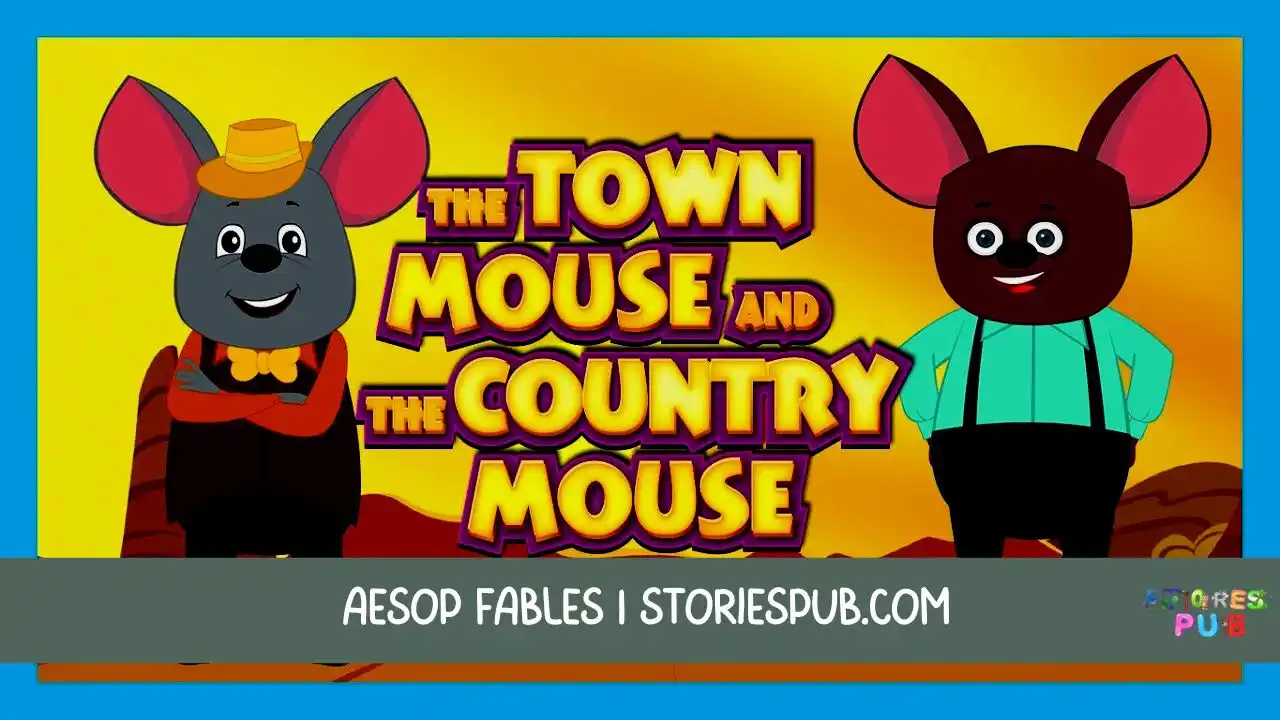Summarize this Article with:
Bifröst: The Rainbow Bridge that connects the worlds

Image credit : Pinterest
Introduction
In Norse mythology, Bifröst is known as the rainbow bridge that connects Asgard, the realm of the gods, with Midgard, the realm of humans. The bridge is said to be made from three elements; fire, water and air.
It’s vibrant colors that shimmer in a myriad of hues have been depicted in various forms of media like movies and literature. But beyond its physical structure, Bifröst holds immense importance in Norse mythology.
It served as a pathway for gods and humans alike to travel between realms. In fact, it was one of the most essential modes of communication between these two worlds.
In this article, we’ll explore the creation story behind Bifröst and its insurmountable importance in Norse mythology. We’ll discuss how it has been depicted over time and its role in some significant events.
The Creation Story
Bifröst was created by Odin’s son Heimdallr who was considered one of the most powerful gods among all. Heimdallr had keen senses; his vision was so sharp he could see for miles around him even at night while his hearing was impeccable – he could hear sounds from miles away. To create Bifrost, Heimdallr used three primary elements: fire, water and air.
He used fire to give life to the bridge while water made it translucent enough for people to walk on it without falling through. Last but not least air gave it stability which allowed people to travel safely on this bridge without any fear or danger involved.
Meaning & Symbolism
Bifrost holds immense significance besides being just a bridge connecting Asgard with Midgard; its symbolism goes far beyond that. It served as an intersection between humanity and divinity giving access to both realms. The bridge is said to represent a passage that leads to higher wisdom and understanding.
Moreover, it also symbolizes the transient nature of life. The myth suggests that Bifröst is very fragile and prone to destruction; this vulnerability speaks about the impermanence of life, reminding mortals that nothing is permanent and death is inevitable.
The Mythological Role
Bifröst played an important role in Norse mythology. Gods used it for travel between Asgard and Midgard while humans used it as a means to interact with gods. It was said that gods only allowed their trusted followers or warriors to cross the bridge since it was guarded fiercely by Heimdallr who could see everything coming from miles away.
During Ragnarok, the final battle between gods and giants, Bifröst shatters under the weight of giant’s army attempting to cross over into Asgard. This event marks the end of the world as we know it.
Depiction in Popular Culture
Bifröst has been depicted in various forms of media like movies, TV shows, comics and videogames. Marvel Cinematic Universe’s Thor franchise features this concept prominently with stunning visual effects depicting its vibrant colours. Besides movies, Bifröst has been portrayed in popular literature too with writers like J.R.R Tolkien (Lord Of The Rings) using its symbolism heavily.
Conclusion
Bifrost remains one of the most intriguing aspects from Norse mythology which has stood out for years among ancient myths worldwide. Its vibrancy and symbolism have inspired various forms of art over centuries which truly makes us ponder on how this simple yet powerful concept has survived all these years through literature and culture alike.
The Creation of Bifröst
A Mythical Bridge between Realms
Bifröst is a mythical bridge that connects Asgard, the realm of the gods, with Midgard, the realm of humans. According to Norse mythology, it was created by the gods to provide a means for them to travel between realms. The creation of Bifröst is an interesting story that involves several elements and deities.
Made from Fire, Water, and Air
The creation of Bifröst began when the gods decided they needed a bridge to connect their realm with Midgard. They enlisted the help of three powerful elements: fire, water, and air. These elements were used to construct Bifröst in a way that made it both strong and flexible.
Fire was used to give Bifröst its strength. It was heated until it became molten and then shaped into long beams that formed the framework for the bridge.
Water was then poured over these beams to cool them quickly and harden them into their final shape. Air played an important role in giving Bifröst its flexibility.
The bridge had to be able to withstand heavy loads without breaking or collapsing under pressure. To achieve this, air pockets were created within each beam during its construction.
These pockets acted as shock absorbers that allowed Bifröst to flex without breaking. Once all three elements had been incorporated into its construction, Bifröst took on its final form: a shimmering rainbow-colored bridge that spanned across space itself.
A Symbolic Connection Between Gods and Humans
The creation of Bifröst not only provided a means for travel between realms but also symbolized the connection between gods and humans. It represented how closely intertwined their fates were and how dependent they were on each other for survival. For humans, crossing over Bifröst meant entering the world of the gods and gaining their favor.
For gods, it was a means to visit humans and protect them from harm. This mutual dependency meant that Bifröst was not just a physical bridge but also a symbolic one that united two seemingly separate worlds.
The Role of Magic in Bifröst’s Creation
The creation of Bifröst is also shrouded in magic. It is said that the god Heimdallr used his magic horn to summon all three elements together for the construction of the bridge.
He then used his magical powers to imbue each element with its unique properties, ensuring that Bifröst would be strong, flexible, and beautiful. In Norse mythology, magic played an important role in all aspects of life.
The creation of Bifröst was no exception. Its construction was a testament to the power and importance of magic in Norse culture.
A Physical Representation of Asgardian Power
The creation of Bifröst served as a physical representation of Asgardian power. The gods were able to create such an incredible feat because they possessed immense strength and knowledge beyond mortal understanding. Bifröst was not just a means for travel but also a symbol of Asgardian might.
It demonstrated their superiority over humans and other creatures across all nine realms. The creation story behind Bifröst is filled with elements of myth, symbolism, and magic.
The use of fire, water, and air to create such an incredible feat is a testament to their significance in Norse mythology. Whether as a means for travel or as a representation of Asgardian power, Bifröst remains an iconic part of Norse lore even today.
The Guardian of Bifröst: Heimdallr
Heimdallr is the guardian of Bifröst, the rainbow bridge that connects Asgard and Midgard. He is one of the most important figures in Norse mythology and is known for his keen senses and abilities.
Heimdallr is said to have incredible hearing, sight, and reflexes, which enable him to keep watch over all nine realms. One of Heimdallr’s primary duties as the guardian of Bifröst is to ensure that no unauthorized beings cross the bridge between Asgard and Midgard.
This means he must be constantly vigilant, always on the lookout for any potential threats. According to legend, Heimdallr can see up to a hundred miles away at night or in foggy conditions.
His senses are so sharp that he can hear grass growing and wool growing on a sheep’s back. Heimdallr’s abilities are not just limited to his sense of sight and hearing; he also has superhuman strength and agility.
In some versions of Norse mythology, he is depicted as having golden teeth and wielding a sword named Hofud. In addition, he has been known to ride a horse named Gulltoppr.
According to mythology, at Ragnarok (the end of days), it will be Heimdallr who blows his horn to signal the start of the final battle between good and evil. The sound will be so loud that it will be heard throughout all nine realms.
Despite his importance in Norse mythology, there are few stories specifically about Heimdallr. However, he appears in many myths as a supporting character or background figure who watches over events from afar.
Overall, Heimdallr plays an essential role in Norse mythology as the guardian of Bifröst. His abilities make him an incredibly powerful figure who ensures that only those authorized by Odin can cross between Asgard and Midgard.
The Role of Bifröst in Norse Mythology
Traversing the Nine Realms
Bifröst, the rainbow bridge that connects Asgard and Midgard, played a significant role in Norse mythology. It was considered the only way for gods and humans to travel between realms.
The bridge was an essential feature of their mythological universe, allowing them to traverse the nine realms without difficulty. As per mythology, when Odin Allfather created Bifröst, he made it exceptionally sturdy so that it could endure great weight and pressure.
It was said that Thor’s chariot could ride across it, and even an entire army of warriors could cross over if they marched single file. The role of Bifröst as a pathway between worlds is evident from various tales in Norse mythology.
For example, during Ragnarok (the end of the world), Bifröst will be destroyed by Surtr’s flames as he marches towards Asgard. This signifies its importance to both gods and humans who would lose access to each other’s realms.
A Symbol of Hope
In addition to being a practical means of transport, Bifröst also held symbolic significance for the people who believed in Norse mythology. The rainbow colors represented hope and promise at times when darkness encroached on their worlds.
The bridge was seen as a symbol of hope for those seeking answers or solutions to various problems in their lives. Its vibrant colors were thought to represent a beacon of light leading people out of their troubles.
It is said that warriors who died bravely on battlefields would ascend from Midgard via Bifröst into Valhalla where they would join other heroes until Ragnarok came upon them. Thus, it also represented a kind of heaven or afterlife for brave souls.
The Pathway for Adventure
Bifrost has been featured prominently in various forms of media as well, and its mythical properties have been explored in numerous ways. In the Marvel Cinematic Universe, where Thor is a central character, Bifröst is depicted as the mode of transport for Asgardians. The bridge’s inclusion in popular culture has led to endless possibilities for authors and scriptwriters to explore the vastness of Norse mythology.
For instance, it has been used as a gateway for adventure by characters who seek answers to mysteries or secret knowledge hidden across different realms. Bifröst was an essential feature of Norse mythology that played a vital role in connecting gods with humans and allowed them to traverse the nine realms.
The bridge was also symbolic of hope and promise during dark times and provided an afterlife for brave warriors. Its importance can be seen in various cultural depictions where it serves as a means of transport or adventure.
The Battle for Bifröst
The Human Army’s Attempt to Cross Bifröst
As the story goes, there was once a powerful human army that sought to conquer Asgard by crossing Bifröst. They had grown tired of living in Midgard and wanted more power and control over the nine realms.
Led by a courageous general, they marched towards the entrance of Bifröst, determined to cross it at any cost. The army was made up of seasoned warriors who had fought many battles before, but they were no match for the gods of Asgard.
Despite this, they were confident in their ability to overpower Heimdallr and cross into Asgard. They approached Bifröst with weapons raised and shields at the ready.
Heimdallr’s Defense Tactics Against Them
As Heimdallr saw the human army approaching, he blew his horn Gjallarhorn, signaling to the gods that danger was imminent. He tightened his grip on his sword and prepared for battle. The first wave of humans charged forward but were met with a fierce defense from Heimdallr.
With each swing of his sword, he struck down multiple enemies at once. The sound of clashing metal echoed across Bifröst as Heimdallr continued to fend off wave after wave of attackers.
Despite their initial confidence, the human army soon began to realize that they had underestimated Heimdallr’s abilities. His vision allowed him to see every move they made before they even made it; he could hear their heartbeats from miles away.
Infuriated by their lack of progress against Heimdallr’s defense tactics, the human general ordered his troops to launch arrows at him from afar. But even this tactic was no match for Heimdallr’s power; with a single swoop of his sword he deflected every arrow back towards the humans, causing chaos and confusion within their ranks.
Eventually, the human army was forced to retreat as Heimdallr stood victorious over Bifröst. This battle served as a reminder that even the most courageous and powerful of armies were no match for the gods of Asgard.
The Significance of Heimdallr’s Defense Tactics
Heimdallr’s defense tactics against the human army serve as a testament to his unwavering loyalty and dedication to his duty as Guardian of Bifröst. It also highlights how important Bifröst was in Norse mythology; it was not just a simple bridge, but rather a symbol for the connection between gods and humans. The battle also symbolizes that even though humans may be brave and powerful, they are no match for divine beings like Heimdallr who possess otherworldly abilities.
It reminds us that we must always respect those who hold positions of power and authority because they have been given those positions for a reason. The epic battle between the human army and Heimdallr serves as one of the most iconic moments in Norse mythology.
It showcases not only Heimdallr’s strength but also highlights how important Bifröst was in connecting Asgard with Midgard. The story provides valuable lessons about courage, loyalty, duty, and respect that continue to resonate with people today.
Conclusion
Bifröst serves as a crucial link between Asgard, the realm of the gods, and Midgard, the realm of humans. Its importance in Norse mythology cannot be overstated. As the only connection between these two worlds, it has been used by gods and humans alike to travel between realms.
Through its symbolism as a rainbow bridge made of fire, water, and air, it represents a powerful link between different elements of nature. In addition to serving as a physical bridge between realms, Bifröst also plays an important role in Norse mythology as a symbol of hope and unity.
It represents the idea that even though different worlds may be separated by great distances or seemingly insurmountable obstacles, there is always a way to connect them. The guardian of Bifröst, Heimdallr, is one of the most important figures in Norse mythology.
His abilities to see and hear everything that happens across all nine realms make him an invaluable protector of this vital link between worlds. Despite its importance in Norse mythology, Bifröst has not received as much attention in modern media as some other aspects of Norse mythology.
Nevertheless, it remains an enduring symbol with great significance for those who appreciate the rich cultural heritage behind this mythological tradition. Bifröst serves not only as a physical connection between Asgard and Midgard but also as a powerful symbol representing hope and unity across seemingly insurmountable divides.
Its guardian Heimdallr is among the most revered figures in Norse mythology for his role in protecting this important link between worlds. While often overlooked in modern media depictions of Norse mythology, Bifröst remains an iconic element with deep cultural significance for those who continue to cherish this ancient mythological tradition.
Hey kids, how much did you like The Bifröst: The Rainbow Bridge that connects the worlds ? Please share your view in the comment box. Also, please share this story with your friends on social media so they can also enjoy it, and for more such Norse Mythology, , please bookmark storiespub.com.
Related Post :
Bifröst FAQ
What is Bifröst in Norse mythology?
Bifröst is a rainbow bridge in Norse mythology that connects the realm of the gods, Asgard, to the realm of humans, Midgard.
Who created Bifröst?
Bifröst was created by the god Heimdall, who is also responsible for guarding it.
What is the significance of Bifröst in Norse mythology?
Bifröst represents the connection between the realm of the gods and the realm of humans in Norse mythology, and it is an important symbol of the unity between these two worlds.
What is the appearance of Bifröst?
Bifröst is typically depicted as a rainbow-colored bridge, spanning the gap between Asgard and Midgard.
Can humans cross Bifröst?
Humans are said to be able to cross Bifröst, but only with the permission of the gods.
What are some other names for Bifröst?
Bifröst is also sometimes referred to as "the bridge of the gods" or "the rainbow bridge."
Are there any dangers associated with crossing Bifröst?
Bifröst is said to be guarded by Heimdall, who is a powerful warrior and can detect any threats to the bridge.
What happens if Bifröst is destroyed?
If Bifröst is destroyed, it would signify the end of the world, as it is the only way for the gods to travel between Asgard and Midgard.
Are there any modern adaptations of Bifröst in popular culture?
Bifröst has been adapted in various forms in popular culture, including in comic books, video games, and television shows. It is often portrayed as a fantastical and otherworldly bridge connecting different realms.
. Is Bifröst similar to other bridges or portals in other mythologies?
The concept of bridges or portals connecting different realms is found in many mythologies throughout the world, including the Hindu mythological bridge, "Ram Setu," and the Japanese "Rainbow Bridge" that connects the mortal world to the world of the gods.












